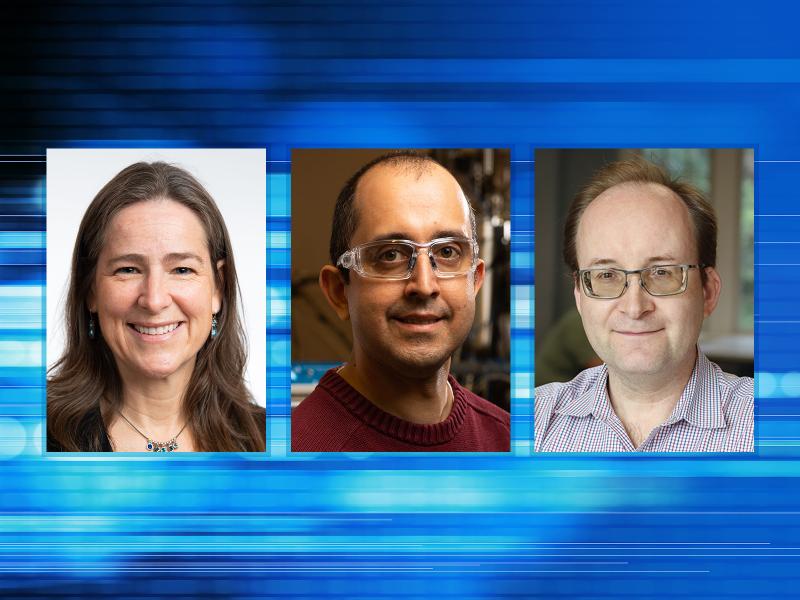
Chemical Separations
Chemical Separations
Efficient, elective, and scalable
recovery and isolation of
critical chemicals and minerals
Efficient, elective, and scalable
recovery and isolation of
critical chemicals and minerals
Experiments bring the fundamental knowledge of interfacial science to essential separations challenges across diverse chemistries.
(Photograph by Andrea Starr | Pacific Northwest National Laboratory)
Complex chemical mixtures are everywhere—from nuclear waste to the ocean—and separating them accounts for approximately 15 percent of industrial energy use in the United States. Researchers at Pacific Northwest National Laboratory (PNNL) are working to understand separations, from fundamental interfacial science to scalable industrially relevant processes.
Separations that isolate different critical minerals, including rare earth elements, from nontraditional and secondary domestic sources are of particular interest at PNNL. Rare earth elements are essential for advanced electronics, national security, and energy applications. Given their limited domestic production and high economic importance, effectively isolating and reusing these elements is essential to enabling next-generation energy dominance. Researchers at PNNL are exploring multiple routes to separating mixtures containing critical elements, including in solid–liquid, electrode–liquid, liquid–liquid, and gas–liquid interface systems.
Separations Research at PNNL
As a multidisciplinary national laboratory, PNNL is ideally positioned to transform separations science, the study of isolating individual chemicals and minerals from complex mixtures. With deeply established expertise in areas such as chemical physics, catalysis, geochemistry, energy storage, materials synthesis, and computational modeling, scientists at PNNL continue developing innovative approaches to separations. They are working to both increase the efficiency and selectivity of existing separation processes as well as devise entirely new transformative separation approaches.
Researchers at PNNL take an integrated approach to understanding how separations occur, combining experimental studies with computational modeling and technoeconomic/life cycle analysis. The broad expertise across PNNL allows internal partnerships across separation science. Collaborations between fundamental science teams and applications-focused groups allow researchers at PNNL to accelerate the process of converting scientific knowledge into functional processes.
New Approaches to Separations
Separations may be accomplished through a wide variety of techniques. These methods often take advantage of chemical differences, such as electric charge or solubility, or physical differences, such as size. A growing body of work, including at PNNL, focuses on reactive separations. These processes involve chemically or electrochemically converting different components of the separation mixture. While this approach may seem more complex, it provides additional ways to tune the separation process for increased efficiency and selectivity. Integrating chemical and electrochemical reactions into continuous flow-based processes allows scientists to change the properties of the system for more effective separations. Reactive separations also offer process intensification as methods are scaled to applications.
In the Non-Equilibrium Transport Driven Separations (NETS) Initiative, researchers at PNNL are developing and evaluating next-generation separation strategies targeting critical materials. NETS will establish the foundational knowledge of how critical materials move and react under far-from-equilibrium conditions generated by external stimuli such as liquid flow and electric/magnetic fields. This knowledge is essential to developing efficient and selective separations that are adaptable to the varying complexity and composition of domestic feedstocks and do not rely on traditional equilibrium processes. Traditional separations are often energy-intensive, generate large amounts of waste, and rely on costly specialty chemicals and materials that are prone to fouling and degradation over time.
A priority of separations research at PNNL is understanding interfaces, the regions where two materials, phases, or compounds meet. Interfaces have unique reactivity, and if properly managed, exert substantial control over the behavior of larger systems. However, interfaces are often highly dynamic and complex, making detailed studies challenging to execute. PNNL has specialized instruments (e.g., ion soft landing, scanning electrochemical cell microscopy, nuclear magnetic resonance spectroscopy, imaging X-ray photoelectron spectroscopy, and microfluidics) and online monitoring tools that enable researchers to better prepare and understand the realities of interfaces at relevant operating conditions. This information will be used to inform artificial intelligence and machine learning-driven approaches to real-time, adaptive process control.




